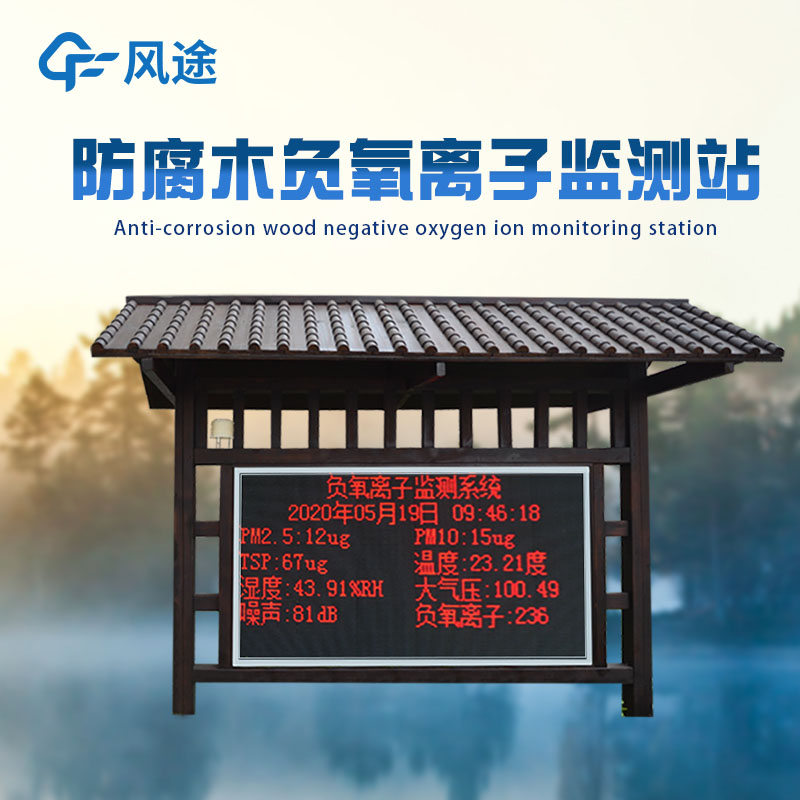Tianyi Sensor IOT Technology Co., Ltd
Sales Manager:Ms. Emily Wang
Cel,Whatsapp,Wechat:+86 15898932201
Email:info@fengtutec.com
Add:No. 155 Optoelectronic Industry Accelerator, Gaoxin District, Weifang, Shandong, China

Sales Manager:Ms. Emily Wang
Cel,Whatsapp,Wechat:+86 15898932201
Email:info@fengtutec.com
Add:No. 155 Optoelectronic Industry Accelerator, Gaoxin District, Weifang, Shandong, China
time:2025-04-01 09:35:33 source:Weather Station viewed:194 time
Negative oxygen ions are hailed as “air vitamins” and are extremely beneficial to human health. As people’s awareness of health and pursuit of tourism quality have improved, scenic areas’ implementation of negative oxygen ion detection projects can not only create a healthy and comfortable tourism environment for visitors but also enhance the competitiveness of the scenic areas.
The negative oxygen ion detectors commonly used in scenic areas adopt the capacitive collector method. They collect the charges carried by negative oxygen ions in the air and calculate the concentration of negative oxygen ions. This method features high sensitivity and accurate measurement, enabling quick acquisition of detection data.
Based on the characteristics of scenic areas, two types of devices, fixed - point and portable ones, are available. Fixed - point devices are installed at fixed locations in scenic areas for long - term continuous monitoring. For example, they are set up in areas with high negative oxygen ion concentrations such as waterfalls and forests. Portable devices, on the other hand, allow staff to conduct flexible detections at different locations, comprehensively assessing the negative oxygen ion concentrations in every corner of the scenic area.
The core component of the Negative oxygen ion monitoring system is the negative oxygen ion sensor. Operating on the principle of the capacitive collector, it accurately captures negative oxygen ions in the air and converts them into electrical signals. The system is also equipped with a five - parameter meteorological sensor to monitor temperature, humidity, wind speed, wind direction, and atmospheric pressure. The data collector is responsible for gathering data from various sensors and transmits the data to the management platform via wireless transmission modules such as 4G and GPRS.
The Negative oxygen ion monitoring system provides 24 - hour uninterrupted monitoring services, with the fastest data refresh rate of 1 second per time. The management platform can not only display data in real - time but also plot historical data curves, helping staff analyze the changing trends of negative oxygen ion concentrations. The system will issue timely warnings when the concentration exceeds the preset threshold.
In practical applications, scenic areas use the Negative oxygen ion monitoring system to stay informed of the air quality within the scenic area in real - time. By presenting the monitoring data to tourists, they enhance the attractiveness of the scenic area. Moreover, environmental protection departments collect regional air quality data through these monitoring stations, providing strong support for ecological environment assessment and protection efforts.

Reservoir safety, particularly the flood prevention capacity of the vast number of small and medium-sized reservoirs, is a critical yet vulnerable link in China's flood control and anti-flood system. Facing the current situation of numerous reservoirs built in the last century, which generally s...
Meteorology and soil moisture are two fundamental elements in agriculture. Meteorology determines the "timing" of agriculture, while soil moisture reflects the "favorable geographical conditions". Together, they form the environmental framework for crop growth.The dynamic changes...
Portable Weather Station features a highly integrated design, incorporating the monitoring functions of multiple meteorological elements. Take the best-selling FT-PQX6 as an example. It is equipped with a six-element integrated sensor, which can conduct real-time and accurate observations of meteoro...
Although traditional mechanical wind speed and direction meters have, to some extent, met basic requirements, they have limitations in terms of accuracy, response speed, and reliability. With the advancement of technology, the 3D Ultrasonic Anemometer based on the time - difference method has been d...